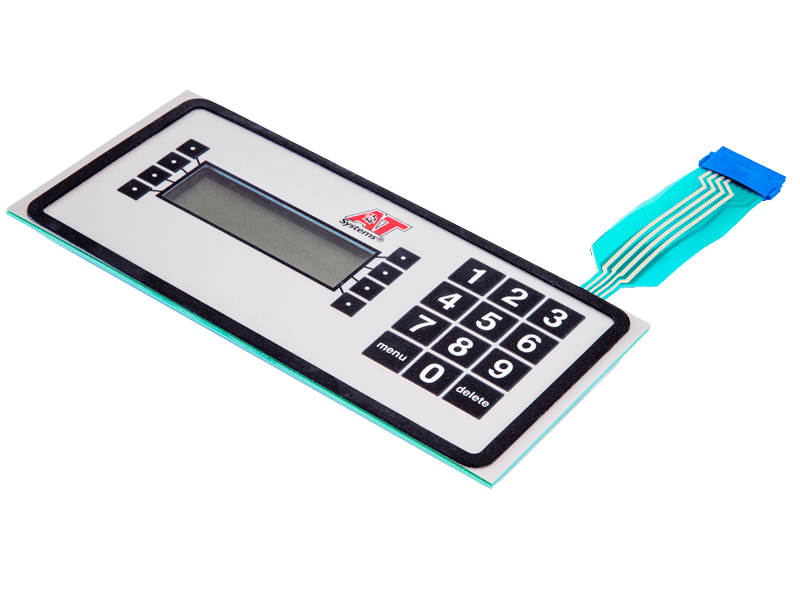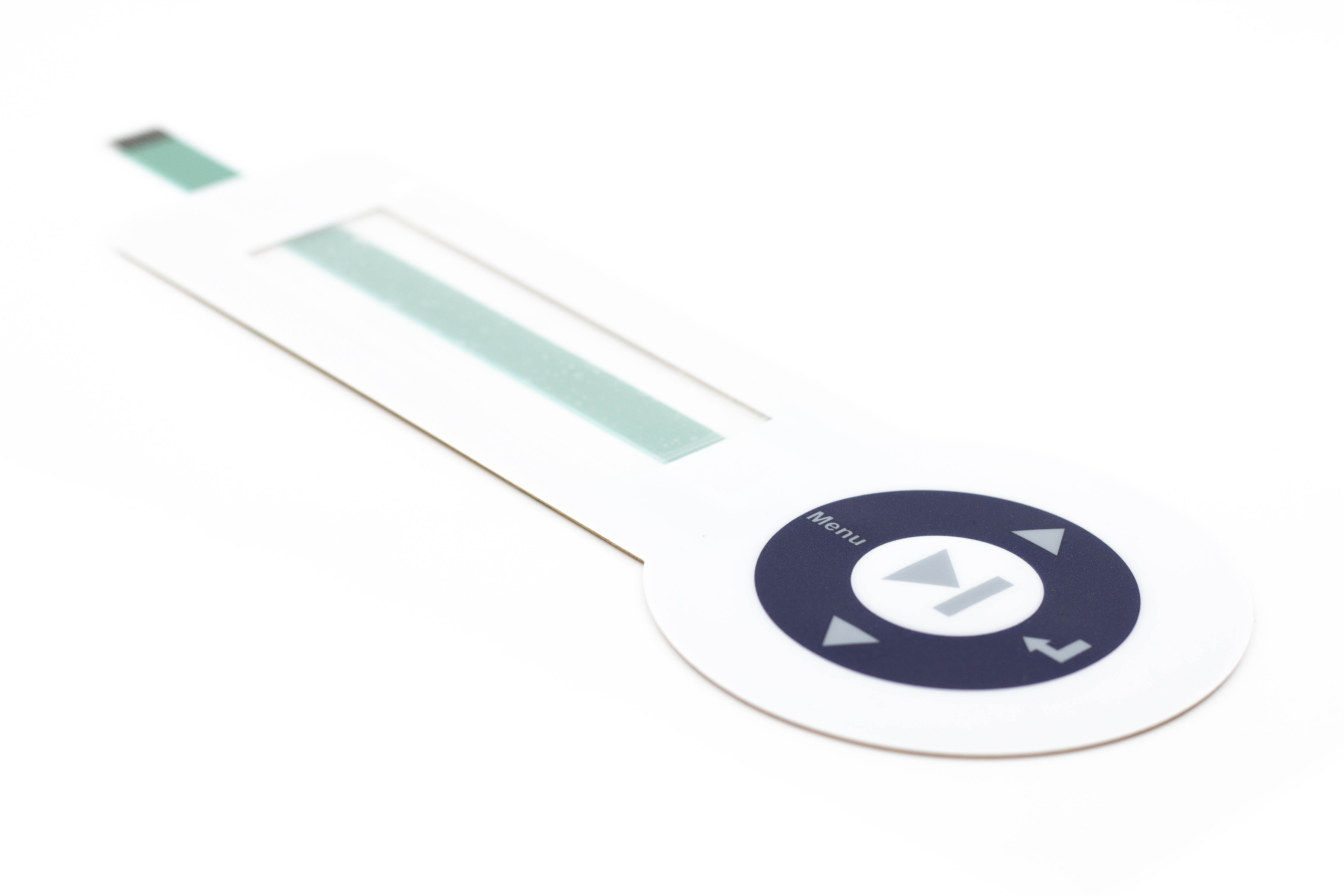Membrane Switches vs. Traditional Switches: What You Need to Know
Membrane Switches vs. Traditional Switches: What You Need to Know
Blog Article
Understanding the Value of Membrane Switches in User User Interfaces
Membrane buttons are essential components in the style of effective customer interfaces, helping with not just performance yet likewise boosting aesthetic appeal and individual communication. Their distinct attributes, such as resistance to customizable layouts and environmental aspects, make them suitable for a diverse selection of applications across several sectors. As we explore the future fads and various advantages connected with Membrane technology, it ends up being clear that these buttons are more than just parts; they represent a convergence of advancement and practicality. The ramifications of this innovation on customer experience deserve analyzing additionally.
What Are Membrane Buttons?

The spacer layer, which consists of sticky residential properties, enables the separation of the circuit layer from the overlay, ensuring that the button remains in a non-activated state up until pressed. When stress is applied to the overlay, it compresses the spacer layer, linking the space and completing the circuit in the underlying layer. This layout not only decreases the physical room required for traditional mechanical buttons however also boosts the toughness of the gadget, as Membrane switches are generally immune to dirt, moisture, and various other environmental variables.
Frequently found in applications varying from consumer electronic devices to medical gadgets, Membrane switches are indispensable to contemporary innovation, offering a efficient and easy to use interface that lines up with modern design requirements.
Benefits of Membrane Switches
While many switch innovations exist, Membrane Switches offer distinct advantages that make them particularly desirable in numerous applications. One of the main advantages of Membrane switches is their small layout, which allows for space-saving executions in gadgets where property is limited. Their thin profile not just enhances aesthetic charm yet also helps with lightweight building and construction.
Another significant benefit is their resistance to ecological variables. Membrane switches are normally secured versus moisture, dust, and contaminants, making them ideal for use popular atmospheres, such as clinical tools and commercial tools. This sturdiness expands the lifespan of the button, reducing maintenance expenses and improving dependability.
Additionally, Membrane buttons can be tailored to fulfill specific style demands, integrating special graphics and shades that improve individual interaction. Their tactile feedback options can also be tailored to supply a gratifying individual experience. Furthermore, Membrane switches are cost-effective, particularly in high-volume applications, as they can be produced successfully.
Applications in Numerous Industries

In the customer electronics field, Membrane switches are widespread in gadgets such as microwaves, cleaning devices, and remote controls. Their responsive feedback and visual options boost user experience while giving a streamlined, contemporary appearance. Furthermore, automotive makers utilize Membrane buttons in dashboard controls and infomercial systems, where space is limited, and customer interaction is critical.
Additionally, the industrial market leverages Membrane switches in control panels for equipment and tools, permitting instinctive operation in typically rough atmospheres. Their resistance to chemicals and dampness ensures durability and reliability in these applications. In general, the flexibility of Membrane Switches contributes substantially to their widespread use, making them vital in various technological domains.
Layout Considerations for Membrane Switches

When making Membrane buttons, check out here several key considerations should be taken into consideration to make sure optimum functionality and user experience. The selection of products is important; picking long lasting, top notch substratums can improve the switch's longevity and resistance to ecological variables such as dampness and temperature level variations.
Secondly, the design of the visuals overlay must focus on clarity and ease of usage. Symbols and text must be understandable, and the format must facilitate intuitive communication (membrane switches). Furthermore, tactile responses is crucial; integrating a tactile dome or various other systems can enhance the customer experience by supplying physical confirmation of activation
Another essential element is the button's electric performance. Developers should ensure that the conductive traces are effectively developed to minimize resistance and stay clear of signal interference. This entails evaluating the required actuation pressure and making sure compatibility with the electronic elements they will user interface with.

Future Fads in Membrane Innovation
As technology remains to advancement, Membrane switches are positioned to evolve substantially, driven by advancements in materials and producing strategies. One arising trend is the incorporation of advanced materials, such as conductive inks and adaptable substrates, which enhance toughness and reduce the overall weight of Membrane buttons. These products not just improve the tactile action however also permit the style of buttons that can hold up against harsher environmental conditions.
Moreover, the assimilation of touch-sensitive modern technologies is transforming conventional Membrane Switches into more interactive individual interfaces. Capacitive touch sensing units installed within Membrane switch panels can offer a much more receptive and instinctive customer experience, straightening with the expanding need for streamlined, modern designs in consumer electronics.
Furthermore, improvements in printing methods, such as electronic and 3D printing, allow fast prototyping and personalization of Membrane switches. This flexibility allows manufacturers to respond faster to market needs and customer choices.
Last but not least, sustainability is coming to be a substantial emphasis, with producers checking out environmentally go now friendly materials and processes. As these fads unravel, the future of Membrane technology assures boosted performance, aesthetic allure, and ecological obligation, solidifying their role in innovative interface across various sectors.
Final Thought
In final thought, Membrane Switches represent an essential element in the design of user interfaces, combining functionality with visual flexibility. Their benefits, consisting of resilience and resistance to ecological aspects, make them appropriate for varied applications across various markets. Thoughtful layout considerations enhance individual interaction and experience. As improvements in technology proceed, the evolution of Membrane switches is anticipated to further fine-tune interface, driving advancement and improving functionality in an increasingly complicated technical landscape.
Membrane switches are essential parts in the layout of reliable individual interfaces, promoting not only functionality however additionally boosting aesthetic appeal and individual interaction.Membrane Switches offer as an essential component in various user interfaces, assisting in a seamless communication between individuals and electronic gadgets.While countless button modern technologies exist, Membrane Switches deal distinct advantages that make them particularly desirable in various applications.Furthermore, Membrane switches can be customized to meet particular style demands, integrating distinct graphics and colors that enhance user interaction.In conclusion, Membrane Switches stand for a crucial element in the design of user interfaces, combining capability with visual adaptability.
Report this page